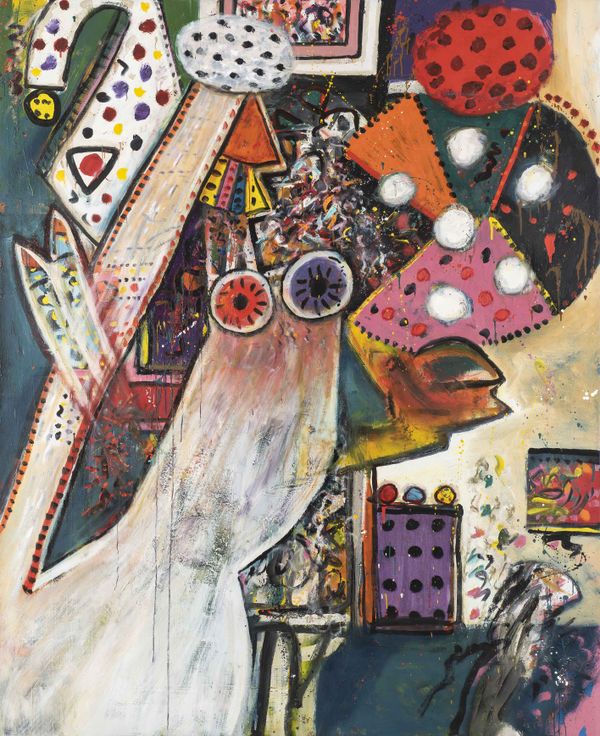Alan Davie
(British, 1920-2014)
Alan Davie is regarded as one of Scotland's most important artists of the twentieth century due to his experimentation with different cultural imageries and for recognising the significance of American Abstract Expressionism. Davie attended the Edinburgh College of Art from 1938-40 where he was awarded the Andrew Grant Travelling Scholarship. Due to the Second World War, Davie had to postpone his scholarship while he completed his military service with the Royal Artillery in 1946. Around this time, Davie was able to visit two major exhibitions: one of Picasso's work at the Victoria and Albert Museum and an exhibition of Paul Klee's work at the National Gallery in London.
In 1948, he took up his scholarship, moving to Italy with his new wife, Janet Gaul. It was here at the Peggy Guggenheim Museum in Venice where he discovered Jackson Pollock's work. This encounter encouraged him to take a new approach to his paintings and he began working on a larger scale and using Pollock's typical method of standing over the painting and adding layers. Upon his return to Scotland in 1950, however, Davie abandoned this style and began to take a newfound interest in Zen Buddhism and African and Oceanic art which he incorporated into his work. He aimed to paint as automatically as possible in order to bring forth elements of his unconscious and create almost unrecognisable compositions. Throughout his life he was also an active jazz musician, poet and jewellery designer.
Davie later taught at the Central School of Arts and Crafts in London from three years until 1956 at which time he moved to New York and held a solo exhibition where every panting sold. Here he also met with leading Abstract Expressionists. Later in life, Davie further expanded his artistic interests, recording his first song in 1971 at Alan Davie Music Workshop. The following year he was awarded Commander of the Most Excellent Order of the British Empire.
His works are now found in museum collections worldwide, including the Peggy Guggenheim Museum in Venice, the Museum of Modern Art in New York, and the Stedelijk Museum in Amsterdam.

